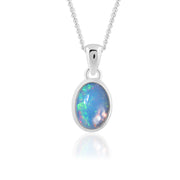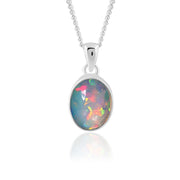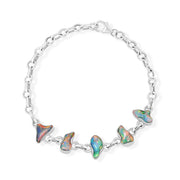As mysterious as its colour range, be unmistakably unique with Bezella’s range of natural Opal jewellery where each piece is one of its kind.

OPAL
The name, derived initially from the Sanskrit language, meaning jewel, and later on from Greek, opal is a mineraloid due to its amorphous properties, unlike other gemstones that are minerals. It displays a unique optical effect called iridescence, a play of colour that results in colourful flashes of light. While white and grey opals are common, black is the rarest shade of opal. It is called “Doodhiya Patthar” in Hindi due to its resemblance to the whiteness of milk.
Cultural Significance
Historically, opal was considered to be a stone of great luck, as it showcased a broad spectrum of colours and was believed to possess the virtues of each gemstone whose colour was present in the spectrum.
It was also considered to grant invisibility; hence it became the most valued gemstone by the thieves at that time.
Benefits
Opal has a hardness of 5.5 to 6.5 on the Mohs scale, making it softer than most gemstones, meaning it can be more prone to scratching, hence requiring careful handling. It has the following benefits:
- Enhances creativity and imagination
- Fosters emotional stability
- Enhances intuition
- Encourages artistic expression
- Promotes personal transformation
Astrological Significance
Vedic - In Vedic astrology, opal is associated with the planet Venus. It is believed to be therapeutic for the body and provide success in business ventures of the wearer.
Western - In Western astrology, Opal is suggested for the Libra sign and is the birthstone of October. It is believed to bring good fortune and can be worn by people of any Zodiac sign.
Origin
It is found in the US, Turkey, Brazil, Canada, and Indonesia in low traces, but the major producers of opal are Australia and Ethiopia. The majority of opal transported worldwide is sourced from Australia.
Environmental Impact
While opal mining provides economic benefits, it is crucial to consider and mitigate its environmental impacts through sustainable mining practices and responsible management to reduce land disturbance, habitat loss, water contamination, and to balance resource extraction with environmental conservation and community well-being.























